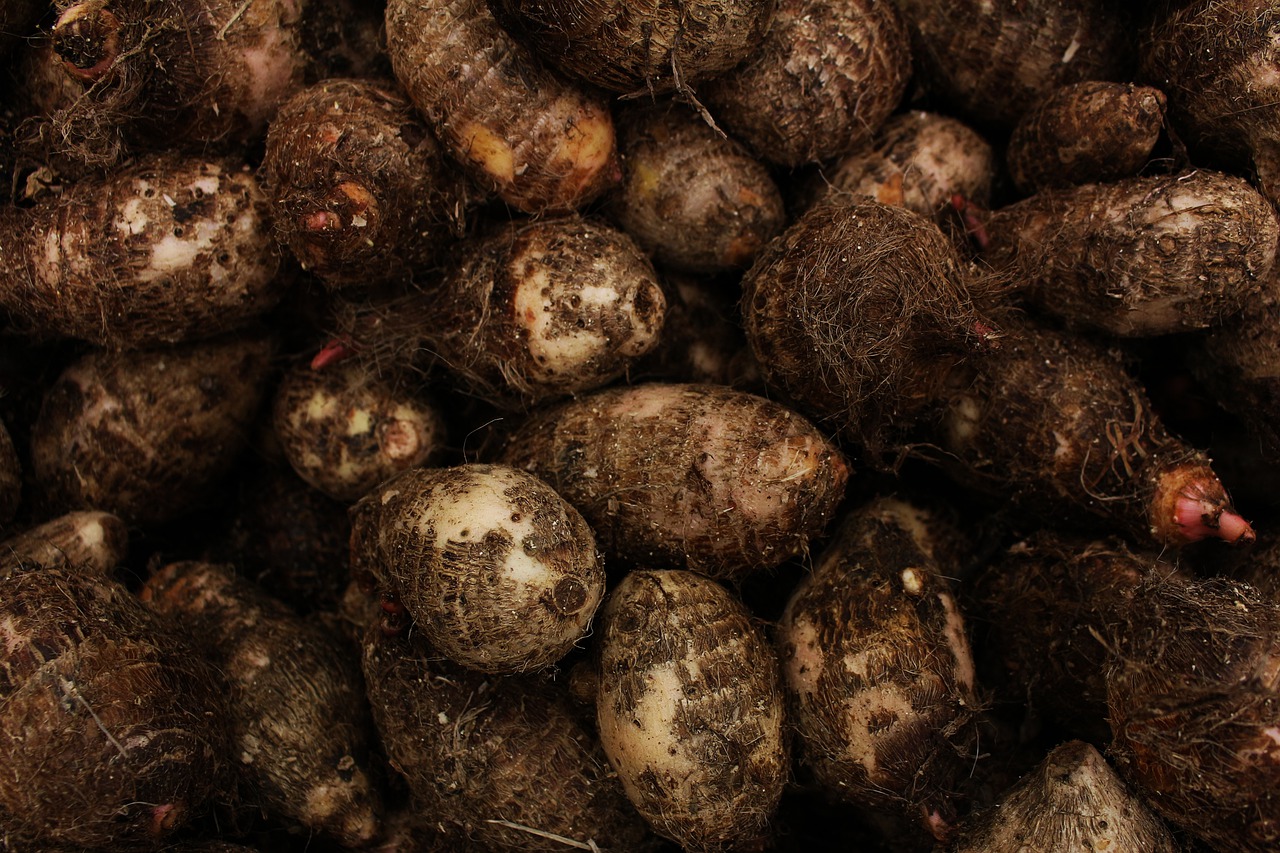Are Yams Toxic to Dogs?
Simply put, true yams and sweet potatoes are not toxic to dogs, and they can be fed to dogs regularly, without any cause for worry if your dog/s will be poisoned.
Sweet potatoes are only tangentially related to real potatoes. The leaves and vine of the potato plant are considered mildly poisonous to our canine friends. Both true yams and sweet potatoes can be fed to canines in either cooked or raw formats.
Can Dogs Eat Yam Skin?
Yam skin and sweet potato skin can be fed to dogs safely. These skins are not poisonous. You can leave on sweet potato or yam skins when chopping up these root vegetables and feeding them to dogs.
What makes them interesting for dogs is that they provide tremendous nutrition and fiber to a dog’s diet, which would help pooches that are struggling to move their bowels.
You can slowly integrate higher-fiber foodstuffs into your dog’s diet so that it won’t struggle anymore. Also, it wouldn’t help give your dog more water, as water is required for a healthy canine digestive tract.
If it is edible, can dogs eat the yam skin too? Or have to peel it before feeding them. Please find out the nutrient of yam too.
Yam Nutrition Facts
As we have mentioned earlier, two distinct vegetables are called “yams” in the United States. There are true yams and sweet potatoes. We have to point out that these are different botanical species, and they also originate from different parts of the world. They may have similar nutritional values, but we should still differentiate them.
True Yam
Dioscorea or true yam originates mostly from African countries, where they are considered a staple there. More than 90% of all yam species originate from Africa, though they are grown through humid Asian countries and the Caribbean. There are over 600 varieties of true yams in the world. Many people are confused with true yams and sweet potatoes because they are both tubers. But there are many substantial differences. First of all, true yams can grow to become very large yams underground. Sweet potatoes can only grow to a certain size before they stop enlarging.
Another source of confusion is that commercial establishments tend to use the word “yam” to describe sweet potatoes. Sometimes, the true meaning of the word is lost to marketing. Now you know how they differ.
True yams are often roasted, pounded, and made into a mash as human food.
These can also be roasted and then chopped into smaller pieces before being fed to dogs. There’s nothing wrong with feeding your dogs some true yams. They’re excellent, and they are not poisonous, either.
Baked or boiled yam provides manganese, copper, potassium, phosphorous, magnesium, iron, vitamin B6, B5, B3, B2, B1, vitamin C, vitamin A, protein (vegetable), fat, dietary fiber, carbohydrates, and 116 calories for every 100 grams.
True yams can be given to dogs who are struggling with weight issues. Yams have lots of dietary fiber that can help keep your pup feel full. So even if a dog bolts a larger quantity of true yams, the dog will feel fuller, faster.
Let’s talk about the debate about cooked true yams and true uncooked yams. Which one is best for your dog? If we are going to take the science behind it, it’s important to realize that dogs have different capacities for digesting food, and for the most part, many dogs won’t be able to digest raw yams properly.
This leaves us with a better choice – cook true yams first before feeding them to dogs. Also, true yams are not so popular or available in the United States, except for the canned variety.
The canned variety should not be fed to dogs because these can have additives that can cause indigestion and other stomach issues. Steer clear of the canned variety. Additionally, some yam preparations have nutmeg, and nutmeg is not good for canines.
The best choice would always be true yams in their new form – not anything else.
Some benefits of feeding true yams to dogs include:
- Reducing inflammation of the muscles and joints
- Improve kidney function
- Improve liver function
- Reduce sugar spikes
- Regulate insulin release
- Regular diabetes in dogs
Sweet Potatoes
Sweet potatoes are widely available in the United States, and you can find them in just about every grocery and supermarket. Sweet potatoes are widely used in US regional cuisines, and you can even find them on the dinner table on Thanksgiving.
A 100-gram serving of sweet potatoes (roasted or baked) provides about 90 calories. Sweet potatoes also provide manganese, copper, potassium, phosphorous, B vitamins, iron, vitamin A, vitamin C, vegetable protein, some fat, some dietary fiber, and carbohydrates. Many people don’t know that for years, dog food manufacturers have already been added sweet potatoes to both canned and wet varieties of dog food. That’s how safe this tuber is – we have been feeding it to our dogs for some time now, only we didn’t realize it.
What is immediately apparent when we review sweet potatoes’ nutritional information is that sweet potatoes have lower calories compared to true yams. While the difference is minute, every calorie counts when you try to regulate your dog’s weight. It’s not easy to shed the pounds as humans, and it’s the same for dogs.
In summary, both true yams and sweet potatoes are nutritious for dogs, and they can even help reduce your dog’s weight. Cooked yams are better in most cases, and make sure that you chop up the yams before giving them to your dogs. Roasting and baking are both ideal cooking methods for both sweet potatoes and true yams. Processed yams are not recommended.

